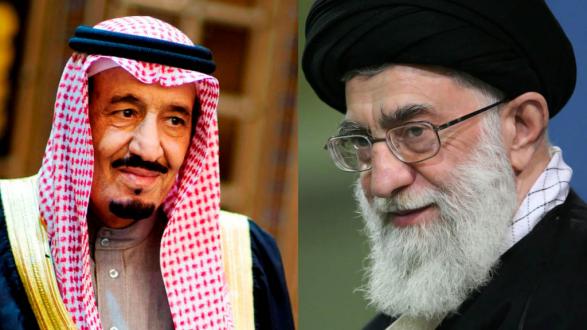Since the execution of leading Shia cleric Sheikh Nimr al-Nimr on January 2, 2016, Saudi Arabia and Iran have been locked in an escalating conflict that threatens to further intensify chaos in the world’s most volatile region. But how did the two countries get here? And how can the situation be resolved?
Dr. Banafsheh Keynoush is a foreign affairs scholar, a Pacific Council member, and an advisor to American private sector companies and policy centers in the Middle East. She received her PhD in International Law and Diplomacy from Tufts University and her B.A. and M.A. in applied linguistics from Tehran Islamic Azad University, and was a visiting fellow at the King Faisal Center for Islamic Studies and Research in Saudi Arabia.
We spoke to Dr. Keynoush about her new book Saudi Arabia and Iran: Friends or Foes? Drawing on her interactions with high-level Saudi and Iranian politicians, the book offers unique insight into the tumultuous Saudi-Iranian relationship, challenges the mainstream fallacy of inevitable sectarian conflict, and argues that the relationship can be fixed through increased diplomacy. A transcript of our conversation, lightly edited for length and clarity, follows.
____________________
Pacific Council: In the book you set out to “unravel the mysteries of the contentious relationship” between Saudi Arabia and Iran. Can you explain how the two countries arrived at their current relationship?
Keynoush: Increased interventions in the Persian Gulf region by external actors – and primarily by the United State – have over time disturbed the organic self-balancing features on which the security of the region has historically depended. America’s role in the Middle East is not always constructive, and Saudi Arabia and Iran are therefore forced to struggle to ensure their security in a highly volatile region. This in turn diminishes their capabilities as powerful regional actors over time.
Riyadh and Tehran view relations with Washington as a replacement for their own critical ties.
Against this background, the Saudi-Iranian partnership is marginalized by the larger U.S. regional role. By default, Riyadh and Tehran view relations with Washington, for better or for worse, as a replacement for their own critical ties.
PC: What is the most common misconception of the ongoing strife between the two countries?
Keynoush: That it is the result of the Shia-Sunni divide. The divide is a driver of Saudi and Iranian foreign policies, but the key motive for both countries is to preserve the security of the state. Once that goal is ensured, Saudi Arabia and Iran have shown the ability throughout their common history to rein in the ideological undertones of their foreign policy.
But as each country becomes weaker over time due to the disturbance of the regional balance of power through foreign interventions, the ideological undertones of their foreign policy become more pronounced. Containing ideology as a tool for advancing foreign policy goals is only possible when the states involved face fewer security challenges.
PC: The book is partly based on accounts of your interactions with high-level Saudi and Iranian politicians. Did those experiences change your perspective on the relationship?
Keynoush: They completely did. I realized that they care about the Saudi-Iranian partnership a lot more than they let on, although they are apprehensive and discouraged by it. They are also aware – although largely clouded by regional tensions at the present moment – that their strife may not be the result of the Shia-Sunni divide, but rather because of larger regional issues which involve the United States and are hard for them to contain.
PC: What effect have external actors like the United States had on the relationship between Saudi Arabia and Iran? And what role should outside actors play?
Keynoush: The United States has, over time, lost perspective in the Middle East by overindulging Saudi Arabia and undercutting Iran, thus leading to tensions between the two. Neither country is happy with respect to how the United States has treated its local partners. Each prefers to have the ability to reshape the partnership with Washington in a manner that is more inclusive of their national interests.
Since the United States remains the overwhelming regional and global power, its policies can overshadow the interests of the regional countries, which are based on regional perspectives rather than a U.S.-based point of view of what the region needs. Furthermore, the United States can at times be an unreliable partner in the long term, which adds to the tensions between Saudi Arabia and Iran.
PC: Looking ahead, how can the Iran-Saudi Arabia relationship be fixed?
Keynoush: It will take a long and hard process involving the United States and other world players to allow Saudi Arabia and Iran to replenish some of their lost capacities as regional powers, restore a degree of balance in their ties, and then proceed with confidence-building measures.
The United States and other world powers should encourage concrete policies which push for balance in the region, such as the promotion of a nuclear weapons-free region, the reduction of arms sales, and the inclusion of both Saudi and Iranian interests in the resolution of regional conflicts. Throughout that process, Riyadh and Tehran should avoid seeing their partnership with Washington and other world powers as a replacement for the critical relationship they have historically had with each other.
____________________
Banafsheh Keynoush is an international geopolitical consultant and foreign affairs scholar.




